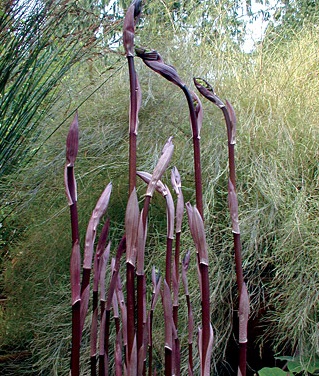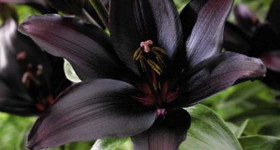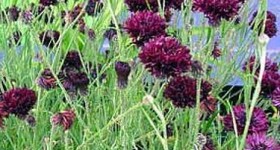 Night Heron, also known as Disporum cantoniense, is an unusual flower that originates from seeds collected in Sichuan, China. These black flowers are also sometimes referred to as Chinese fairy bells. Night Heron (Disporum) will emerge from the ground in the spring as purplish-black stems that resemble asparagus plants. These stems may reach heights from four to six feet tall. As these stems grow, they begin to take on characteristics such as arching side shoots, which make them resemble bamboo.
Night Heron, also known as Disporum cantoniense, is an unusual flower that originates from seeds collected in Sichuan, China. These black flowers are also sometimes referred to as Chinese fairy bells. Night Heron (Disporum) will emerge from the ground in the spring as purplish-black stems that resemble asparagus plants. These stems may reach heights from four to six feet tall. As these stems grow, they begin to take on characteristics such as arching side shoots, which make them resemble bamboo.
Around April, Night Heron will develop leaves on each branch that are chocolate and purplish colored. Clusters of yellow flowers are mingled among the leaves of the plant at this stage.As the foliage matures, around the latter part of May, it will develop a shiny deep color tinted with purple. These leaves will retain their color throughout winter until new growth begins to emerge the following spring.
Night Heron (Disporum) is an unusual plant that tends to work well in Asian themed gardens. These plants require regular watering and should be planted in an area with adequate sun exposure, or else they may lose their purple hues. Full sun or open shade is the optimal location, although very hot afternoon sunlight should be avoided. The stems of these plants are evergreen and last through winter, although they should be trimmed down to the ground around the middle of February to allow room for new growth.
These purple-black flowers work well when planted as vertical borders in perennial gardens. They blend well with dark green flowers or black backgrounds, and look especially nice when planted near Chinese dogwood. They can also be planted to provide a privacy screen, or used in a woodland garden setting. These fragrant flowers will add a mysterious and dramatic accent to any garden and resemble bells when in bloom, which has earned them the nickname of Chinese fairy bells. Night Heron can be purchased as a shrub from a local garden center.
The Explorer’s Garden: Rare and Unusual Perennials
&











Speak Your Mind